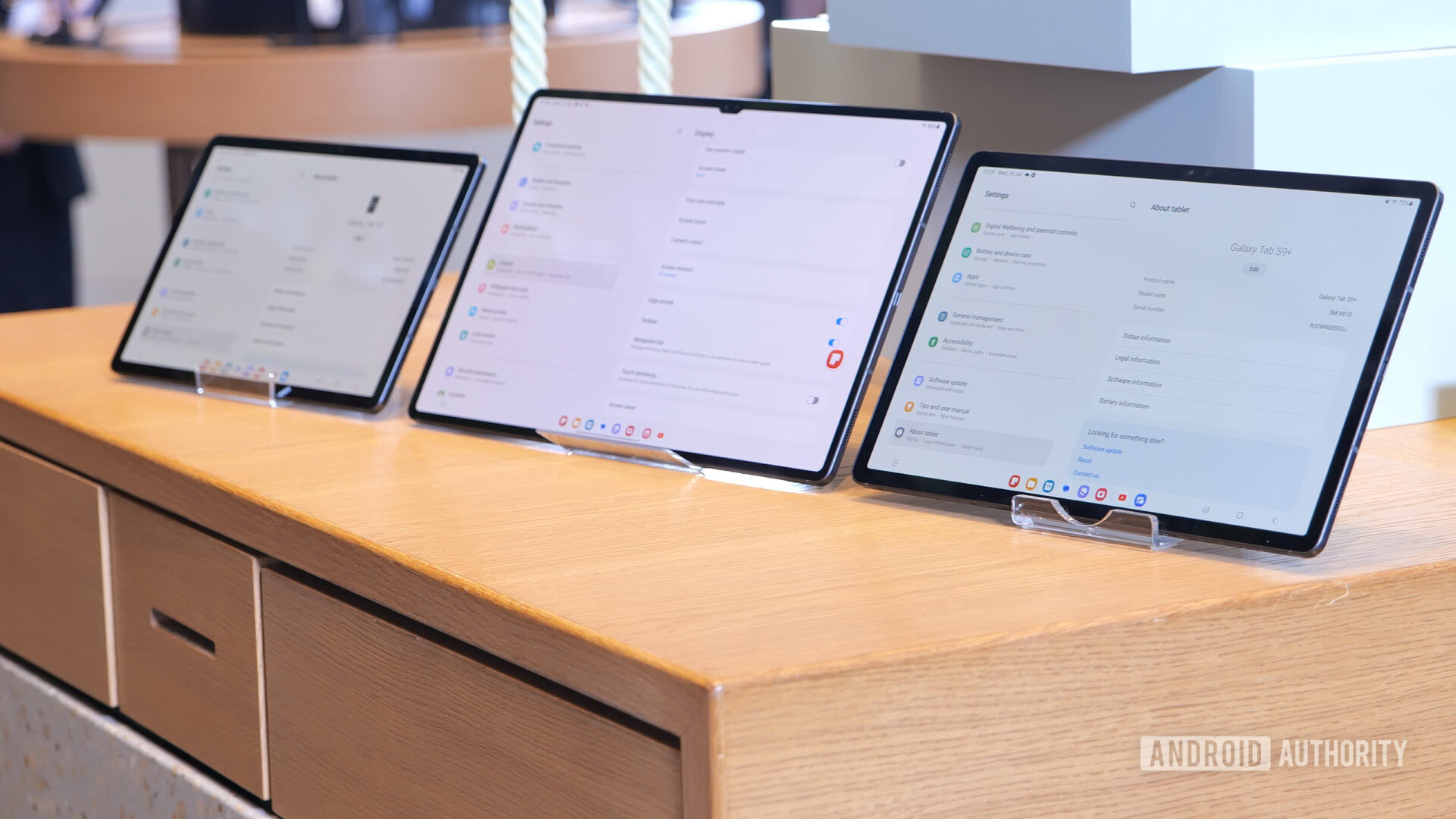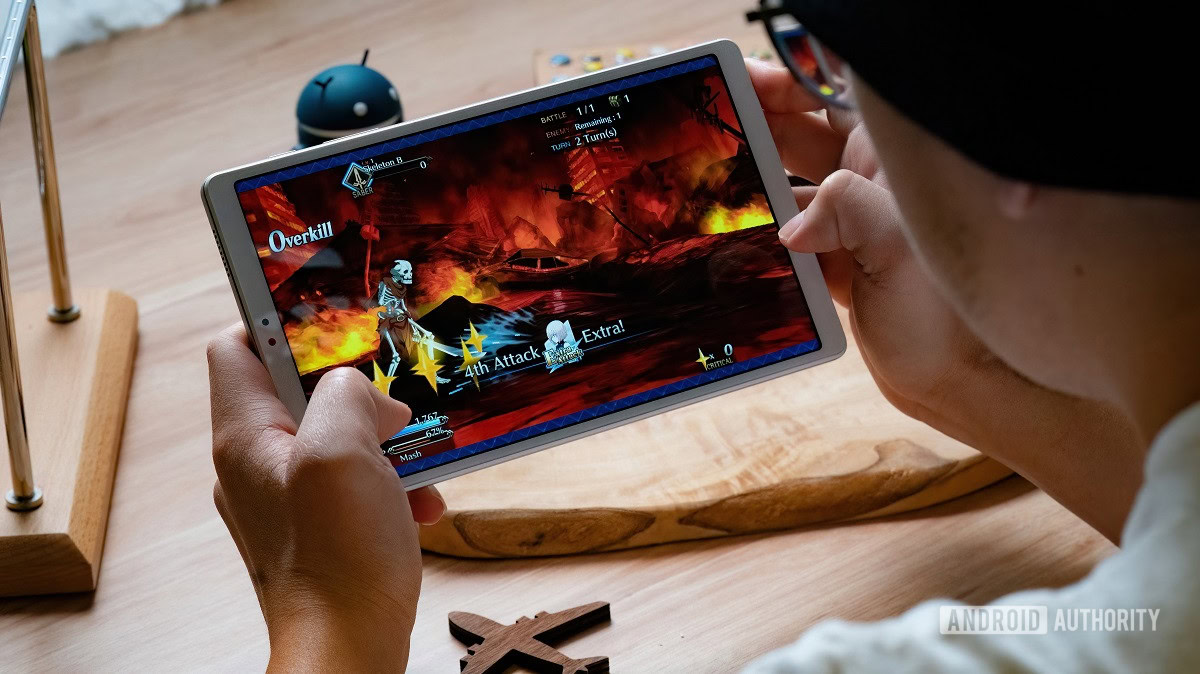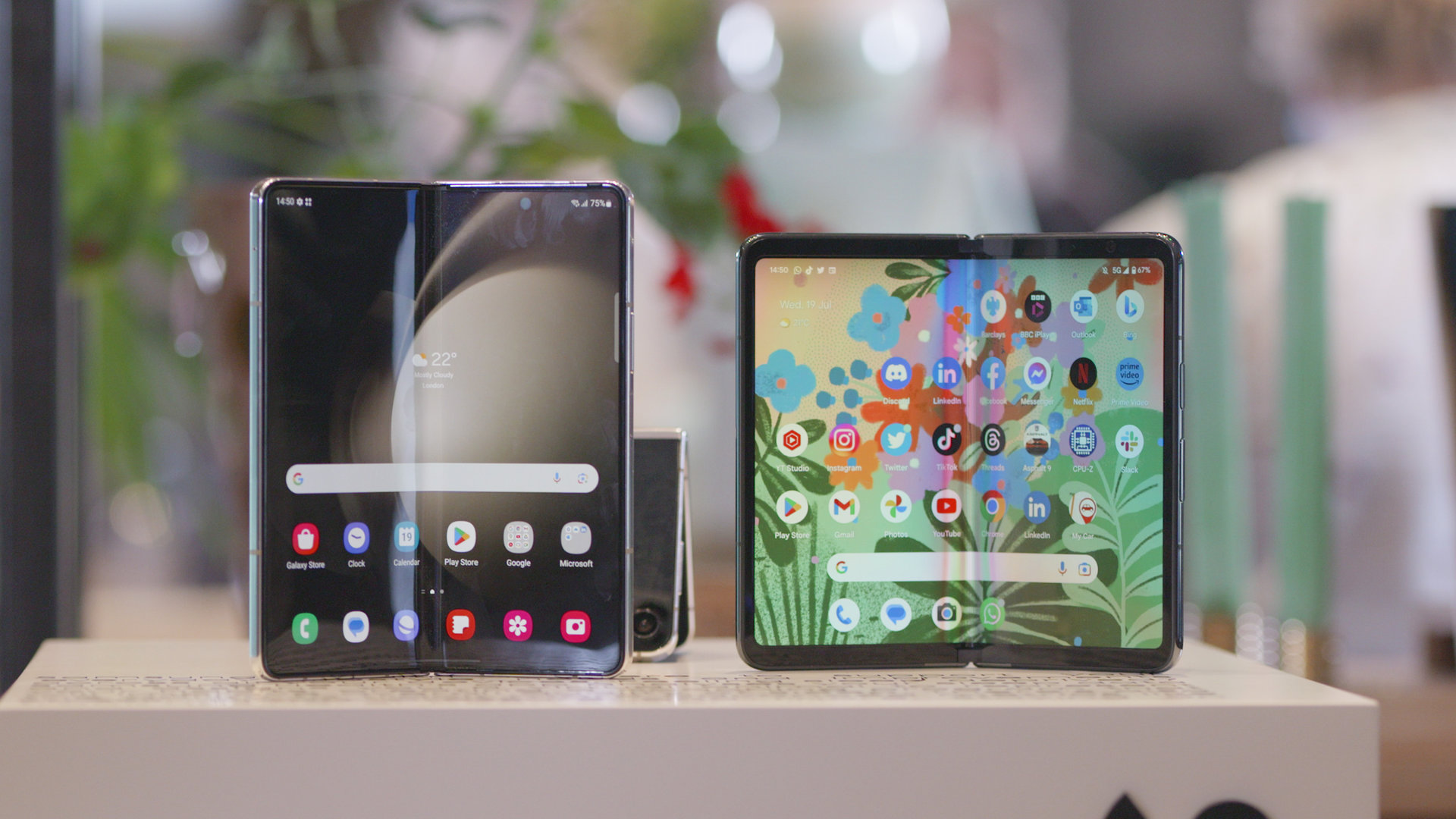Affiliate links on Android Authority may earn us a commission. Learn more.
Samsung, not Google, is why I'm confident about the future of Android tablets
Published onJuly 29, 2023

The future of Android tablets is looking brighter these days. For more than a decade, Google tried, failed, retried half-heartedly, abandoned its large-screen projects, pivoted to Chrome OS then reverted that decision, all with the attention span of Finding Nemo’s Dory. Despite all of that, both Android on tablets and Android tablets are in a good place now.
The operating system is better adapted for big screens, Google apps are looking good on them, and there’s enough traction to get more third-party developers involved. From a hardware perspective, your choice spans from budget tablets like the Samsung Galaxy Tab A7 Lite all the way to the high-end Galaxy Tab S9 Ultra, passing by Xiaomi Pads, the OnePlus Pad, and Google’s very own Pixel Tablet.
So yes, as someone who’s had an Android tablet since 2011 and championed them for years only to lose faith in 2020, I can’t resist feeling giddy about this redemption arc.
Is this an illusion, though? Another short upward spell before we trudge through the next stagnation phase? I don’t believe so, and the reason I am optimistic about the future of Android tablets is not Google. It’s Samsung, in spite of Google. And my argument is threefold: Samsung’s persistence, the economy of apps, and foldables.
Do you think the future of Android tablets is bright?
Samsung’s persistence with tablets paid off

Over the course of Android’s history, Samsung has bulldozed its way through many upgrades, forcing Google to react and add features to the stock operating system. Quick setting toggles, multiwindow, dual-SIM support, stylus compatibility, and more came to Samsung’s devices before they launched on the Nexus or Pixel line-up or in any official stock Android version. Even though Samsung wasn’t the absolute first to implement each of these, it did it before Google and insisted. Google had no choice but to standardize the feature and provide official APIs for everyone.
The same thing happened with tablets. Again, Samsung wasn’t the first Android tablet maker, but it launched the first Galaxy Tab in 2010 with Android 2.2 Froyo, way before 3.0 Honeycomb was a thing. A year later, Google announced Honeycomb.
Samsung's insistence on some features has forced Google to add them to stock Android. It has a more focused, less capricious strategy than Google, especially with tablets.
Since then, Samsung hasn’t let up, releasing one new tablet after the other, insisting on providing a better large-screen experience, even if it had to implement it on its own through One UI. Galaxy Tabs have gotten better despite Google’s on-again, off-again commitment, culminating in the fantastic productivity and multimedia powerhouse that is the Tab S9 series.
So even if Google decides to change focus again in the future, even if it abandons the Pixel Tablet line-up, I trust Samsung will keep its head in the game. The company is more focused and less capricious than Google, and it’ll keep pushing for more improvements to the underlying operating system. After all, the two companies must cooperate if they want to tackle the iPad-sized elephant in the room.
Everyone follows the money

Samsung knows how to sell products. It is one of the best-positioned tech companies in the world with an official presence in nearly every country, logistics to make any competitor envious, and sales numbers that speak for themselves. That’s leverage.
So when Samsung decides to stick with a product or a feature, it shifts the entire industry along with it. By occupying the second spot in the tablet market and selling more than 20 million tablets a year, the Korean giant puts itself in a position where it can’t be ignored. Developers flock to users, and Samsung has users; it’s as simple as that. Even if Google decides that its own tablet sales numbers aren’t enough to justify sustained development, it can’t ignore Play Store profits from people who’ve bought Samsung tablets.
Samsung's leverage is its sales numbers. Users bring developers, which is beneficial to the entire ecosystem.
That’s another reason why the future of Android tablets is in good hands. If more developers are interested in making great tablet apps and games or in adapting their existing software to a larger screen, that can only be beneficial to the ecosystem as a whole. Granted, we’re still far from Samsung having an Apple-like stranglehold on tablet developers, but we’re closer to it now than we’ve ever been.
The future is foldable

All of the good things we’re seeing with Android on tablets today are owed to foldables. Just think back to a few years ago; Google was all about Chrome OS on tablets then poof! None of that mattered anymore. The introduction of the first foldables and Samsung’s Galaxy Z line-up forced Google into a different path. It renewed the company’s dying interest in Android development for larger screens and kickstarted the Android 12L project, which was later merged into stock Android.
It’s easy to see that we’re moving towards a future where more of the devices we carry will fold in some shape to become smaller and more portable. Whatever form these foldables take, Android will have to continue adapting to their larger screens to survive. So unless Google wants to drop the ball on the next evolution in personal computing, it has to keep investing resources in foldable and tablet development. It just can’t afford to ignore that market.
Foldables have forced Google to renew its interest and commitment to developing Android for larger screens.
The future of Android tablets is bright, though they may not be tablets in the traditional sense. They might be large slabs, they may fold in half, or they may fold on two or more axes to become smaller phone-like devices. Oh, they could even be wearable or projectable!
That is to say, I feel like we’ve reached a turning point in the story of Android on larger screens. And the future of the platform is no longer solely linked to Google’s capricious whims. There are bigger forces at play and their name is Samsung.